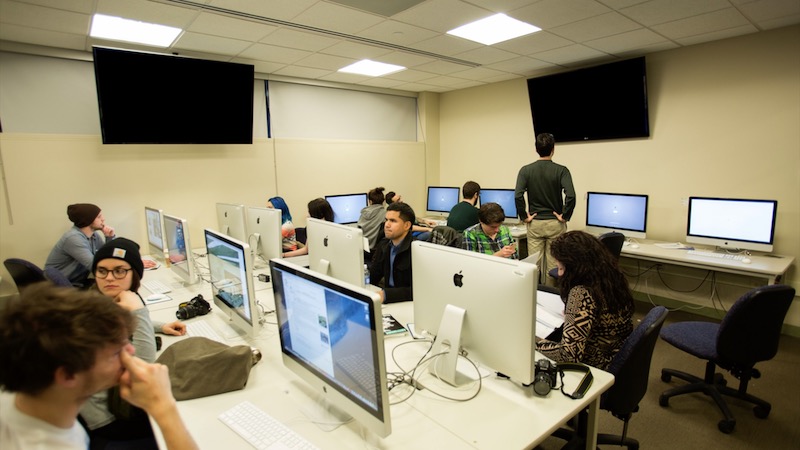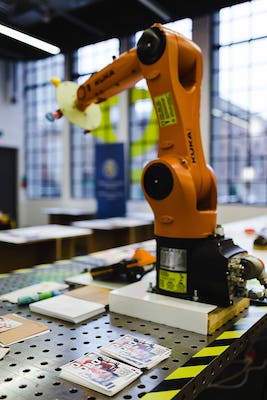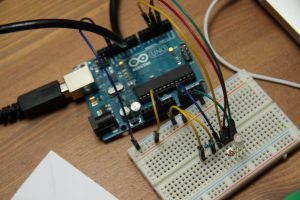As technology becomes more prominent in today’s society, schools must introduce advanced learning within the classroom. That’s why it’s critical to build a robotics lab for schools. A lot of schools already have existing technology and computer labs, which make it convenient to introduce robotics, 3D printing, and maker spaces within a school environment.
In this article, I will share with you three ways to build a robotics lab for your school. You can use this guide to retrofit a classroom, computer lab, or library to pique students’ interests in STEM learning.
Let’s get started!
Part 1: Convert an outdated space into a robotics lab
If you’re looking to refresh an existing computer lab, classroom, or part of a library, you may want to consider converting it into a robotics a tech lab as well. While you’re replacing computers and adding in TVs or better projectors, you can consider adding robotics kits, tools, toolboxes, 3D printers, and storage. A lot of these components can be stored using wall shelves or on a tabletop without sacrificing space.

A robotics lab doesn’t necessarily mean there will be Industrial Robot arms at the forefront of the space. Some robotics labs provide access to tech tools (3D printers, Soldering Irons, workbenches), basic equipment, and computers. You can opt to have Mac or Windows computers. Just do a little planning ahead of time to figure out what computers make the most sense for the types of things you’ll be working on. Industrial robots, PLCs and HMIs are notoriously incompatible with macOS, whereas, hobby robotics, programming, and digital media classes might benefit most from having iMacs.
Make sure there’s enough space between computers so that students can work on hardware and take notes. You can also incorporate standing desks or workbenches to make it easier to assemble devices. Lastly, lighting in a robotics lab is an important consideration. If the room you’re using doesn’t have natural lighting, consider upgrading old, buzzing fluorescent lights to long-lasting LEDs.
Part 2: Purchase Robotics Lab Equipment
Furthermore, a big part of having a robotics lab is to offer technologies that other classes don’t have. It’s important to define the focus of your robotics lab so that you can purchase the necessary equipment. For example, if you’re looking to teach Industrial Automation, you’ll want to have space for an Industrial Robot, Control Panel, and all the safety precautions. If your robotics lab is focused on designing new robots, then you may want to have 3D printers, soldering irons, and tools available for students to use.
In addition to tools and equipment, you’ll want to make sure that your lab has adequate seating and workspaces. Make sure that everyone has a chair, computer, and table to work at. Robotics as a field is collaborative, but grading is still individualized. Ensure that you have enough equipment to set your robotics class up for success. Once you have the physical location and equipment picked out, it’s time to train staff and get your robotics program rolled out.
Part 3: Train Staff & Deploy Robotics Curriculum
Thirdly, it’s important to train staff and deploy a robotics curriculum.
What good is a robotics lab if you don’t have educators who can properly use it?
I see this mistake frequently. Schools receive a budget to purchase the latest and greatest and make use of the technology for a few weeks, but then it sits because no one was trained on all the possibilities of what you can do. Don’t spend thousands of dollars on a robotics lab if you’re not going to utilize all of the features!
If you’re in this situation, there are a couple of things you can do. One idea is to develop a robotics curriculum in-house. This is great if you already have staff experienced in teaching robotics. You can follow our “tactical guide” on starting a robotics program, here.
Another option is to purchase a school or classroom license to the Learn Robotics Alpha Series. This is a hybrid approach to robotics: every student receives access to the online curriculum and a hardware kit. The online curriculum guides students (and teachers) through the process of coding, wiring circuits, and building robots from scratch. The Alpha Series makes teaching robotics easy for every teacher, even those who don’t have programming experience, to teach concepts in hardware and software. Read more about the Alpha Series, here.
Part 4: Continuously Grow as Technology Changes
Once you have a working robotics lab, and students are using it, it’s a good idea to schedule periodic reviews. Technology is a forever-changing beast, so it’s best to take a look at your curriculum, tools, and equipment to ensure that your lab aligns with current industry trends.

Some areas to consider are Industrial Robotics, Industrial Internet of Things, Artificial Intelligence, and Advanced Manufacturing.
While you might not be the facility to provide advanced learning, it never hurts to upgrade and replace outdated computers, peripherals, and junk that’s acquired over time.
Bonus Tip: Work with Learn Robotics to build a robotics lab
We know how daunting it is to make a robotics lab at your school. Learn Robotics offers a straightforward approach to designing and implementing robotics labs at schools. Not all schools are the same, so we provide two different services to help you get started.
Education Services: Build a Robotics Lab at Your School
- Choose to upgrade an existing computer lab, classroom, or space with technologies to match your school’s budget and learning objectives.
- Retrofit your existing robotics lab with State of the Art Curriculum and provide educators with on-site STEM training.
- Provide a productive and educational space equipped with tools used in Industry.
Learn Robotics can help you plan, quote, and implement a robotics lab space that meets your budget. Our staff has years of experience working in robotics labs around the country. Contact us; we’re here to help!




